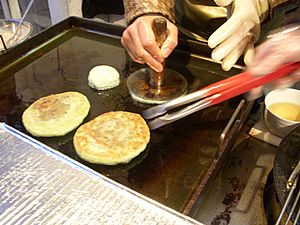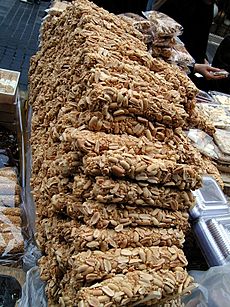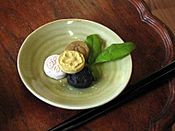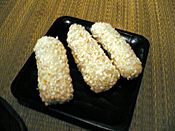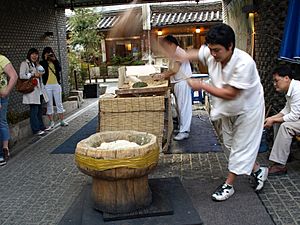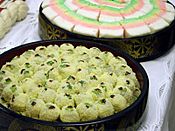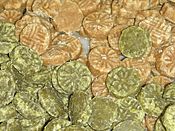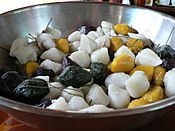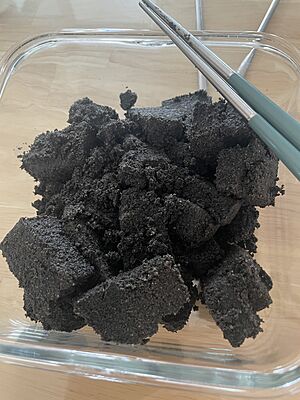List of Korean desserts facts for kids
Welcome to a list of delicious Korean desserts! Korean food has a long history, changing over hundreds of years. It started with ancient farming and nomadic traditions in places like southern Manchuria and the Korean peninsula. Over time, the natural environment and different cultures helped shape the amazing Korean dishes we know today.
Contents
Popular Korean Desserts
| Name | Picture | What it is |
|---|---|---|
| Bungeo-ppang |  |
A fish-shaped pastry. It's made using a special iron, kind of like a waffle maker! |
| Chapssal-tteok |  |
A chewy Korean rice cake, called tteok. It's made from sticky rice. |
| Hwangnam-ppang | 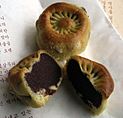 |
A small, round pastry. It has a sweet red bean paste inside. |
| Hodu-gwaja |  |
A tasty treat shaped like a walnut. It has a red bean paste filling. The outside is made from ground walnuts and wheat flour. |
| Hoppang | A quick and easy steamed bun. It's usually filled with smooth, sweet red bean paste. | |
| Hotteok |  |
A type of Korean pancake with a sweet filling. It's a very popular street food in South Korea. |
| Kkul-tarae |  |
Made from super thin strands of honey and maltose. It often has a sweet nut filling inside. |
| Melona | 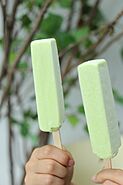 |
A popular ice pop! You can find it in many flavors like honeydew melon, banana, mango, and strawberry. |
| Patbingsu | 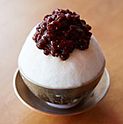 |
A refreshing shaved ice dessert. It comes with sweet toppings like chopped fruit, condensed milk, and red beans. If it doesn't have red beans, it's just called bingsu! |
Hangwa: Traditional Korean Sweets
Hangwa is a general name for traditional Korean sweets and candies. They are often made using ingredients like grain flour, honey, yeot (a type of syrup), sugar, fruits, or edible roots.
Here are some types of Hangwa:
-
Dasik is a pretty hangwa made from starch, pine pollen, black sesame, honey, or rice flour.
-
Yumilgwa is made by deep-frying a mix of grain flour and honey. It's crispy and sweet!
Tteok: Chewy Korean Rice Cakes
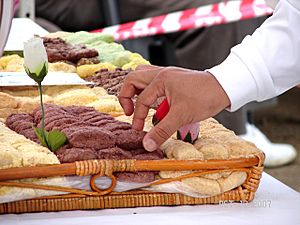
Tteok is a group of Korean rice cakes. They are usually made from sticky rice flour, also known as sweet rice or chapssal, by steaming it.
Here are some types of Tteok:
- Baek-seolgi
- Gaepi-tteok
- Bupyeon
- Danja
- Hwajeon
- Injeolmi
- Jeolpyeon
- Jeungpyeon
- Mujigae tteok
- Sirutteok
- Songpyeon
- Tteokbokki
- Tteokguk
- Yaksik
-
Bupyeon (bottom) and mujigae tteok (top). Bupyeon are sweet rice flour doughs covered with powdered beans.
-
Jeolpyeon is a steamed rice cake with pretty patterns pressed into it.
See also


